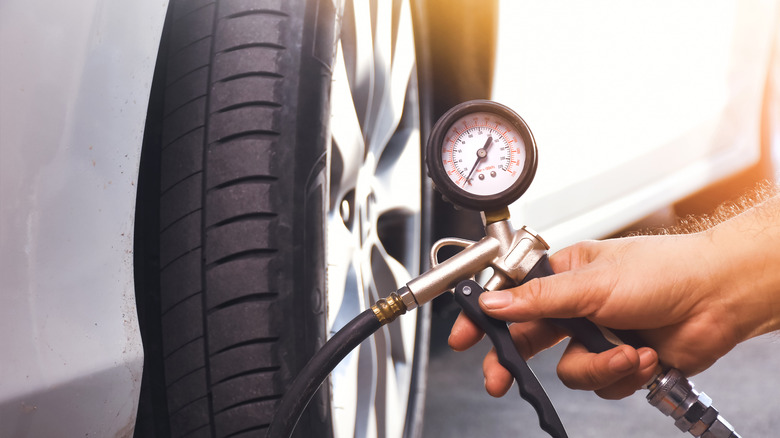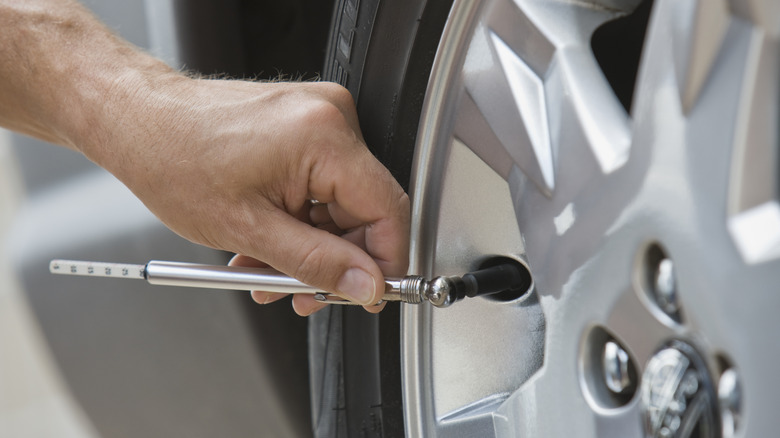How To Let Air Out Of A Tire (With And Without A Tool)
We may receive a commission on purchases made from links.
Driving on overinflated or underinflated tires is a surefire way to slash the life out of your car's rubber, which is bad news if you're on a tight budget since new tires are darn expensive. Maintaining the correct tire pressure on all four corners will save you about 11 cents a mile on gas and extend the life of your tires by 4,700 miles, according to the NHTSA. The sad part is that only 19% of American car owners are conscientious about proper tire inflation and maintenance.
Slacking on periodic tire maintenance can lead to early wear and tear and potentially deadly blowouts. The most important thing you can do is to always drive with the correct tire pressure. The manufacturer lists the recommended tire pressure in the owner's manual or on a sticker called the Tire and Loading Information Label on the inside of the driver's door. Pressure is listed is in pounds per square inch (PSI) or kilopascals (kPA).
Using a tire pressure gauge, you can instantly check if your tires have too little or too much air. You must add air if the pressure reading is below the recommended value, and you can do it at a service station or with a portable tire inflator. However, what should you do if the readings exceed the recommended tire pressure?
How to let the air out of your tires
Each tire has a valve stem, a metal or rubber tube that sticks out from inside the rim. It holds the valve, which you can use to release air from the tires by following these steps.
- Unscrew the cap from the valve stem by turning it counterclockwise.
- Inside the valve stem you will see the valve with a pin at the center. Pushing the pin down will release air. If you have a digital tire gauge, it will automatically release air until the pre-set pressure is matched.
- You can also use the nub on the back of a pencil-type tire pressure gauge to press down on the pin to let the air out. Do this in bursts of a few seconds, checking the air pressure in between and adding more if it gets too low. If you don't have a tire pressure gauge, you can use your fingernail, a screwdriver, a pen, or the pointed part of your car key to push the pin of the valve stem in and release some air.
- Replace the cap once you're done, making sure it seals tight.
It's good practice to check the tire pressure weekly or before going on a long trip. We advise checking the pressure when the tires are cold, usually first thing in the morning or when the vehicle's been resting for at least three hours.

